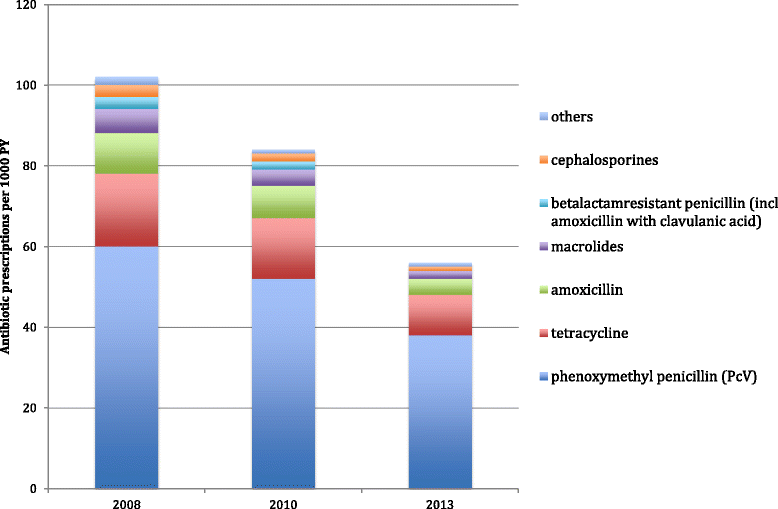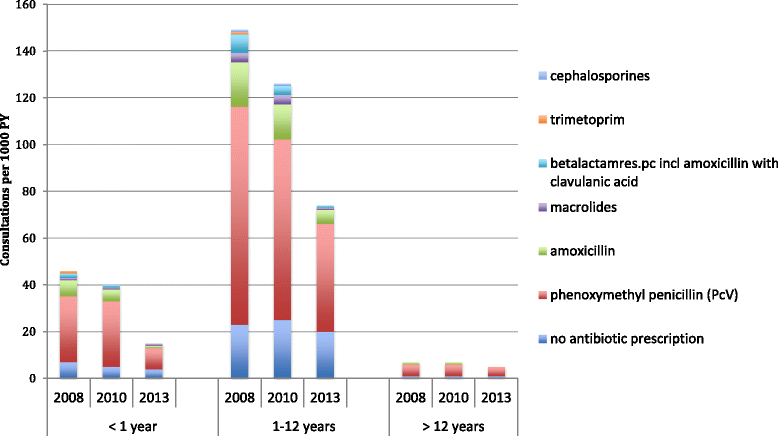Reduction in antibiotic prescribing for respiratory tract infections in Swedish primary care- a retrospective study of electronic patient records
- PMID: 27887585
- PMCID: PMC5124268
- DOI: 10.1186/s12879-016-2018-9
Reduction in antibiotic prescribing for respiratory tract infections in Swedish primary care- a retrospective study of electronic patient records
Abstract
Background: Swedish studies on antibiotic use in primary care have been based on one-week registrations of infections. In order to study adherence to guidelines, analyses based on large databases that provide information on diagnosis linked prescriptions, are needed. This study describes trends in management of infections in Swedish primary care particularly with regards to antibiotic prescribing and adherence to national guidelines.
Methods: A descriptive study of Sweden's largest database regarding diagnosis linked antibiotic prescription data, the Primary care Record of Infections in Sweden (PRIS), for the years 2008, 2010 and 2013.
Results: Although the consultation rate for all infections remained around 30% each year, antibiotic prescribing rates decreased significantly over the years from 53.7% in 2008, to 45.5% in 2010, to 38.6% in 2013 (p = .032). The antibiotic prescribing rate for respiratory tract infections (RTIs) decreased from 40.5% in 2008 to 24.9% in 2013 while those for urinary tract infections and skin and soft tissue infections were unchanged. For most RTI diagnoses there was a decrease in prescription rate from 2008 to 2013, particularly for the age group 0-6 years. Phenoxymethylpenicillin (PcV) was the antibiotic most often prescribed, followed by tetracycline. Tonsillitis and acute otitis media were the two RTI diagnoses with the highest number of prescriptions per 1000 patient years (PY). For these diagnoses an increase in adherence to national guidelines was seen, with regards to treatment frequency, choice of antibiotics and use of rapid antigen detection test. The frequency in antibiotic prescribing varied greatly between different Primary Healthcare Centres (PHCCs).
Conclusion: Falling numbers of consultations and decreased antibiotic prescription rates for RTIs have reduced the antibiotic use in Swedish primary care substantially. Overprescribing of antibiotics could still be suspected due to large variability in prescribing frequency, especially for acute bronchitis and sinusitis. Continuous evaluation of diagnosis linked prescribing data and feedback to doctors is essential in order to achieve a more prudent antibiotic use.
Keywords: Antibiotic prescribing; Electronic patient records; Family practice; General practice; Primary healthcare; Respiratory tract infections.
Figures
References
MeSH terms
Substances
LinkOut - more resources
Full Text Sources
Other Literature Sources
Medical



